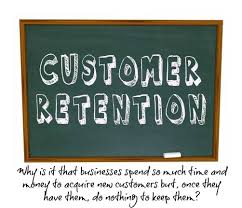The Data & Analytics division of Black Knight, Inc. (NYSE: BKI) just released its latest Mortgage Monitor Report, based upon the company's mortgage performance, housing and public records datasets. This month, by leveraging its McDash loan-level mortgage performance data in combination with public property records, Black Knight undertook an analysis of mortgage servicer retention rates by looking at consecutive mortgages on a single property before and after a refinance transaction. As Black Knight's Data & Analytics Division President Ben Graboske explained, retention rates -- the share of borrowers who remain with their prior servicer post-refinance -- have reached record lows, creating serious challenges in an ever more competitive marketplace.
"In Q1 2019, fewer than one in five homeowners remained with their prior mortgage servicer after refinancing their first lien," said Graboske. "That is the lowest retention rate we've seen since Black Knight began tracking the metric in 2005. Anyone in this industry can tell you that customer retention is key – not only to success, but to survival. The challenge is that everyone is competing for a piece of a shrinking refinance market, the size of which is incredibly rate-sensitive, and therefore volatile in its make-up. Just a month ago, we were reporting that recent rate reductions had swelled the population of eligible refinance candidates by more than half in a single week after hitting a multi-year low just a few months before. Then, with just a slight increase in the 30-year fixed rate -- less than one-eighth of a point -- 1 million homeowners lost their rate incentive to refinance -- almost 20% of the total eligible market.
 "This is critical, because refinances driven by a homeowner seeking to reduce their rate or term have always been servicers' 'bread and butter' when it comes to customer retention. Offering lower rates to qualified existing customers is a good, and relatively simple, way to retain their business. Unfortunately, the market has shifted dramatically away from such rate/term refinances. In fact, nearly 80% of 2018 refinances involved the customer pulling equity out of their home -- and more than two-thirds of those raised their interest rate to do so. Retention battles are no longer won -- or lost -- based on interest rates alone. A simple 'in the money analysis' doesn't provide the insight necessary to retain customers and can't take the place of accurately identifying borrowers who are likely to refinance and offering them the correct product. Rather, understanding equity position -- and the willingness to utilize that equity -- is key to accurately identifying attrition risk and reaching out to retain that business."
"This is critical, because refinances driven by a homeowner seeking to reduce their rate or term have always been servicers' 'bread and butter' when it comes to customer retention. Offering lower rates to qualified existing customers is a good, and relatively simple, way to retain their business. Unfortunately, the market has shifted dramatically away from such rate/term refinances. In fact, nearly 80% of 2018 refinances involved the customer pulling equity out of their home -- and more than two-thirds of those raised their interest rate to do so. Retention battles are no longer won -- or lost -- based on interest rates alone. A simple 'in the money analysis' doesn't provide the insight necessary to retain customers and can't take the place of accurately identifying borrowers who are likely to refinance and offering them the correct product. Rather, understanding equity position -- and the willingness to utilize that equity -- is key to accurately identifying attrition risk and reaching out to retain that business."
Black Knight's Mortgage Monitor report also looked at retention from the perspective of product offerings. For example, in 2018, 72% of FHA/VA borrowers in peak cash-out refi vintages (2012/2013) refinanced into a conventional loan product to pull equity from their home; just 28% ended up with an FHA/VA product. This suggests that borrowers may be looking to shed mortgage insurance while simultaneously taking advantage of equity. An astonishing 93% of those same borrowers raised their interest rate to do so. On the other hand, those with GSE loans tended to remain in GSE products post-refinance; 61% remained, while 32% shifted to loans held in bank portfolios. It could be that rising home prices are pushing that second segment into non-conforming, jumbo products. It's also worth noting that fewer GSE borrowers, as compared to FHA/VA, are increasing their interest rate in order to tap equity.
Customer retention has become increasingly difficult for mortgage servicers as a volatile refinance market with greater rate sensitivity has constrained the number of remaining refi candidates, further heightening competition
- The market has shifted dramatically away from rate/term refinances -- for which servicers have historically seen good retention rates -- to cash-outs and home sales, areas in which retention has been low
- Cash-out retention rates have been roughly half that of rate/term refinances in the years following the financial crisis
- Nearly 80% of Q4 2018 refinances involved the customer pulling equity out of their home; more than two-thirds of those accepted a higher interest rate to do so
- Interest rates have become less of a determining retention factor; whereas customers who left their servicers post-refi in 2012 received an average 0.25% better rate, today, such variations have all but disappeared
- An interest rate increase of less than one-eighth of a point over the past month has cut the number of homeowners who could likely qualify for a 0.75% reduction in their rate by 1 million







